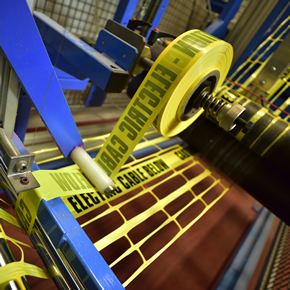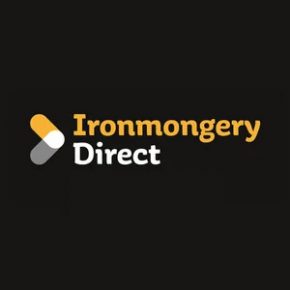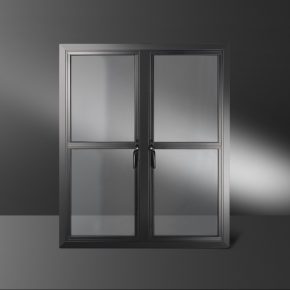
Why Hazard Warning Signs Are Essential for The Construction Industry
The following article looks at how hazard warning signs are a key risk mitigation tool in construction and that having the right ones in place is more than just a box-ticking exercise, with it also able to give your construction business a competitive edge.
The construction industry is one of the most high-risk in terms of accidents and injuries to both workers and visitors. Clearly, businesses have both a legal and a moral responsibility to protect health and safety. But it also makes sound commercial sense. Injuries result in lost man-days, costs and damage to reputation, none of which are good for business.
Having the right hazard signs in the right places is core to a construction site’s H&S practices and to instilling a culture of safety and wellbeing that is promoted across the site. While ensuring that employees feel comfortable about speaking out when it comes to near misses in order to improve processes is a positive step, it is always better to have the right signs in place before an incident can happen than afterwards. Here are some of the core areas that need to be considered.
Access
The last thing anyone needs on a construction site is visitors or the idle curious wandering around the place. Access signs ensure everyone knows what areas are off-limits.
When it comes to these types of signs, it is as important to tell people where they can go as where they can’t. Access signs are not just about Keep Out or Permitted Access Only. They also include the signs that tell visitors where they need to report.
Fire safety
It’s a prerequisite in any public place to provide clear and unambiguous information on what to do and where to go in the event of a fire. Clearly, this is even more important in a construction area, where the risk of fire is higher due to the activities going on. There is also a greater chance of layouts changing, new contractors arriving on site and so on, meaning people will not intuitively be aware of the nearest exit.
PPE
Accidents happen on construction sites. Objects fall, things spill, and sparks fly. PPE is every contractor’s first line of defence against the risks he or she faces – and it is the employer’s first line of defence in the event of a lawsuit. Being crystal clear on the PPE requirements in terms of boots, hard hats, gloves and so on is in everybody’s interest.
Motor vehicles
A construction site can get crowded with cars, vans and heavy plant competing with foot traffic for space. That sounds like an accident waiting to happen, so signs telling
drivers where to park, when to sound horns and in what areas they are likely to encounter pedestrians all help mitigate the risk.
Which signs do you need?
The above are some of the most common examples, but there are plenty of other types of signage you might need depending on the work undertaken, for example when working at height, where there is live electricity or when corrosive chemicals are in play.
HSE regulations demand that a risk assessment be performed on a regular basis, and identifying the need for additional safety signage should form an ongoing part of this routine.
Latest news

7th March 2025
ASSA ABLOY and Lorient Showcasing at the Fire Safety Event
ASSA ABLOY and Lorient are excited to announce their debut at the UK’s fastest-growing fire safety exhibition, the Fire Safety Event, taking place at the NEC, Birmingham, from 8 – 10 April 2025.
Posted in Access Control & Door Entry Systems, Architectural Ironmongery, Articles, Building Industry Events, Building Industry News, Building Products & Structures, Building Regulations & Accreditations, Building Services, Doors, Exhibitions and Conferences, Facility Management & Building Services, Health & Safety, Innovations & New Products, Posts, Restoration & Refurbishment, Retrofit & Renovation, Security and Fire Protection, Seminars
7th March 2025
Kent Company Wins Big With IronmongeryDirect’s TradeXtra Prize Draw
IronmongeryDirect, the UK’s leading online ironmongery specialist, is excited to announce the winner of its TradeXtra prize draw.
Posted in Access Control & Door Entry Systems, Architectural Ironmongery, Articles, Awards, Building Industry Events, Building Industry News, Building Products & Structures, Competitions, Doors, Innovations & New Products, Restoration & Refurbishment, Retrofit & Renovation, Security and Fire Protection, Videos
7th March 2025
Origin launches OW-70 Soho Window to revolutionise steel-look market
Origin, the UK’s leading manufacturer of premium aluminium windows and doors, has launched its groundbreaking OW-70 Soho Window.
Posted in Aluminium Products, Architectural Ironmongery, Articles, Building Industry News, Building Products & Structures, Building Systems, Doors, Glass, Glazing, Innovations & New Products, Restoration & Refurbishment, Retrofit & Renovation, Windows
6th March 2025
GEZE UK: Seeking Support at the National Fenestration Awards
GEZE UK is seeking support from industry professionals, clients and partners at the upcoming National Fenestration Awards, taking place on 25th October 2025, where the company is hoping to be shortlisted in five key categories.
Posted in Access Control & Door Entry Systems, Architectural Ironmongery, Articles, Awards, Building Industry Events, Building Industry News, Building Products & Structures, Building Services, Doors, Exhibitions and Conferences, Facility Management & Building Services, Health & Safety, Recruitment, Restoration & Refurbishment, Retrofit & Renovation, Security and Fire Protection, Windows
 Sign up:
Sign up: